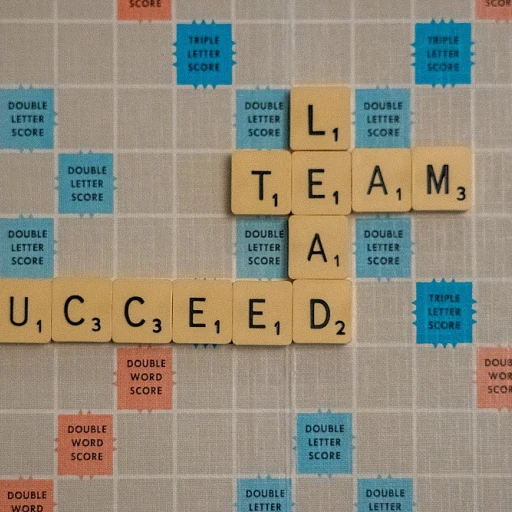
Understanding Lean Management Processes
The Essence of Lean: A Journey Towards Operational Excellence
In today's ever-evolving business landscape, understanding and implementing lean management processes has become crucial for staying competitive. Lean thinking isn't just a methodology focused on manufacturing; it's a holistic approach aimed at reducing waste and optimizing efficiency across all business activities. By adopting lean principles, organizations can streamline processes, eliminate waste, and ultimately create more value for customers. The lean methodology hinges on continuous improvement and the seamless alignment of operations with customer needs. This approach not only enhances customer satisfaction but also drives operational excellence by focusing on value-added activities. Lean project management emphasizes key aspects such as:- Eliminating Waste: Identifying and removing unnecessary processes that do not contribute to customer value.
- Continuous Improvement: Adopting a kaizen mindset that fosters ongoing enhancements in operational processes.
- Value Stream Mapping: Visualizing work processes to effectively identify areas for process improvement.
Identifying Inefficiencies in Current Operations
Recognizing Operational Bottlenecks
Identifying inefficiencies within your organization's processes is a crucial step in optimizing business efficiency through lean management. To initiate this process, it is essential to conduct a comprehensive evaluation of current operational workflows. This involves examining each step in your production or service delivery and scrutinizing it for any potential areas of inefficiency or waste.
Start by mapping out your entire business process, paying close attention to customer interactions and the flow of materials and information. This step allows you to see where resources may be underutilized or where bottlenecks might occur. When identifying these inefficiencies, consider the following:
- Waste Identification: Look for excess inventory, waiting times, or unnecessary work steps that do not add value to the customer or the process.
- Time Management: Assess how work is currently allocated and if time is being squandered in certain areas, potentially delaying other critical tasks.
- Communication Flow: Determine if poor communication processes are contributing to slowdowns or misunderstandings in team activities.
Once these bottlenecks are recognized, set clear objectives highlighting areas needing improvement. Employing lean thinking, you can further explore the concepts of kaizen, or continuous improvement, and apply these principles to facilitate ongoing enhancement of processes. This approach not only aids in problem solving but also encourages a culture of operational excellence throughout your organization.
Implementing Lean Strategies for Maximum Impact
Strategic Steps to Implement Lean for Optimal Results
Implementing lean strategies requires a structured approach to ensure maximum impact on your business operations. The journey begins with a clear understanding of lean principles, which focus on eliminating waste and enhancing value for the customer. Here are key steps to guide your organization through this transformative process:
- Define Value from the Customer's Perspective: Start by identifying what your customers truly value in your product or service. This understanding is crucial for aligning your lean process improvement efforts with customer satisfaction.
- Map the Value Stream: Analyze your current processes to pinpoint areas of waste and inefficiency. This step involves a detailed examination of each stage in your production or service delivery, aiming to streamline activities that do not add value.
- Create Flow by Eliminating Waste: Once inefficiencies are identified, work towards creating a seamless flow in your operations. This involves restructuring processes to minimize delays and bottlenecks, ensuring that work progresses smoothly from one stage to the next.
- Establish a Pull System: Implement a pull-based system where production is driven by actual demand rather than forecasts. This approach helps in reducing overproduction and inventory costs, aligning production closely with customer needs.
- Seek Continuous Improvement: Embrace the philosophy of kaizen, or continuous improvement, by encouraging your team to regularly identify and implement small, incremental changes. This fosters a culture of ongoing enhancement and innovation.
Successful implementation of lean strategies hinges on effective team collaboration and a commitment to continuous improvement. By adopting these strategies, businesses can achieve operational excellence and enhance their competitive edge in the market.
Overcoming Challenges in Lean Management Adoption
Addressing Common Hurdles in Lean Implementation
Adopting lean management processes can be transformative for any business, yet it is not without its challenges. Understanding these obstacles is crucial for ensuring a smooth transition and maximizing the benefits of lean methodologies.
Resistance to Change
One of the most significant barriers is resistance to change. Employees accustomed to traditional processes may find it difficult to embrace new lean principles. To overcome this, fostering a culture of continuous improvement and open communication is essential. Encourage team members to participate in problem-solving activities and highlight the benefits of lean thinking, such as improved customer satisfaction and operational excellence.
Insufficient Training and Understanding
Another challenge is the lack of adequate training and understanding of lean principles. Without a clear grasp of lean methodologies, teams may struggle to implement changes effectively. Investing in comprehensive training programs and workshops can help bridge this gap, ensuring that everyone is equipped with the necessary skills to contribute to process improvement.
Inadequate Leadership Support
Leadership plays a pivotal role in the successful adoption of lean management. Without strong support from the top, lean initiatives may falter. Leaders must actively champion lean projects, demonstrating commitment to eliminating waste and improving processes. This involves not only setting clear goals but also providing the resources and support needed to achieve them.
Balancing Short-Term and Long-Term Goals
Organizations often face the challenge of balancing short-term demands with long-term lean objectives. It is important to integrate lean thinking into the strategic planning process, ensuring that immediate business needs do not overshadow the pursuit of continuous improvement. Utilizing tools like the PDCA cycle can help maintain this balance, allowing for iterative improvements while keeping long-term goals in sight.
Ensuring Sustained Engagement
Maintaining momentum in lean initiatives can be difficult over time. To ensure sustained engagement, it is crucial to celebrate small wins and recognize team efforts. Regularly revisiting lean principles and their impact on business processes can reinforce their value and encourage ongoing participation.
By addressing these challenges head-on, organizations can create a robust framework for lean management, paving the way for enhanced efficiency and success in their operations.
Measuring Success and Continuous Improvement
Evaluating Strategies for Ongoing Enhancement
After implementing lean strategies within your organization, it is crucial to focus on measuring success and ensuring continuous improvement. This involves adopting a structured approach to evaluate the effectiveness of lean processes and identifying further opportunities for eliminating waste and optimizing efficiency.
Utilizing Key Performance Indicators
To measure the success of lean management strategies, establish key performance indicators (KPIs) that align with your business objectives. These might include metrics related to production efficiency, waste reduction, and customer satisfaction. Regularly monitor these KPIs to track progress and identify areas where lean improvements have made significant impacts.
Integrating Continuous Improvement Practices
Continuous improvement is a core principle of lean thinking. Encourage your team to partake in regular evaluations and embrace the Kaizen philosophy, which emphasizes small, incremental changes that enhance processes over time. This proactive mindset should permeate every aspect of your organization, from production to customer service, driving a culture of ongoing refinement.
Applying the PDCA Cycle
The PDCA (Plan-Do-Check-Act) cycle is an effective tool for fostering continuous improvement in lean management. Begin by planning targeted changes, implementing them on a small scale, and subsequently checking the results. If successful, the practice can be standardized across the organization. This iterative cycle ensures your lean strategies remain dynamic and responsive to your business needs.
Gathering Employee Feedback
The success of your lean initiatives largely depends on the engagement and insight of your team members. Regularly solicit feedback from employees involved in the processes and empower them to propose ideas that improve processes. Their firsthand knowledge of operations is invaluable for identifying challenges and crafting innovative solutions.
Fostering a Culture of Lean Thinking
Sustaining lean management practices requires a commitment to fostering a culture that prioritizes continuous improvement and operational excellence. Encourage your team to embrace lean principles in their daily activities, nurturing a shared responsibility for the company's success. This collective effort will ensure your organization continues to thrive in an ever-evolving business landscape.














